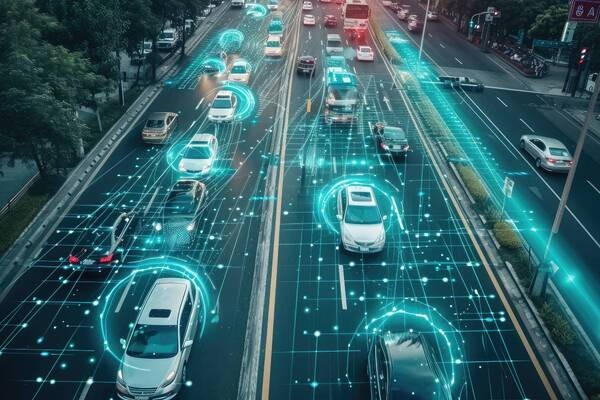Vehicular Ad Hoc Networks (VANETs) are a subset of Mobile Ad Hoc Networks (MANETs) where vehicles equipped with wireless communication devices communicate with each other and with roadside infrastructure. VANETs aim to improve road safety, traffic efficiency, and driving experience through intelligent information sharing.
But VANETs are inherently dynamic — cars move fast, connections break quickly, and the network topology changes constantly. This makes routing data packets a major challenge.
That’s where Zone Routing Protocol (ZRP) steps in, and when further optimized with Artificial Intelligence (AI), it brings the promise of faster, smarter, and more reliable vehicular communication.
🧭 What is ZRP? Understanding Zone Routing Protocol
ZRP is a hybrid routing protocol, blending the strengths of proactive and reactive routing methods.
🔄 Key Features of ZRP:
-
Zone-based structure: Each node defines a local zone (with a defined radius in hops).
-
Proactive within zones: Nodes keep track of routes within their own zones.
-
Reactive across zones: For nodes outside the zone, routing is initiated on demand.
-
Reduced overhead: Limits unnecessary broadcast traffic by segmenting the network.
This makes ZRP ideal for VANETs, where localized movement is predictable (e.g., vehicles on the same road) but long-range communication needs flexibility.
🧠 Integrating AI into ZRP: A Smart Upgrade
Artificial Intelligence is revolutionizing traditional networking paradigms by introducing adaptive, learning-based strategies. When AI is integrated into ZRP, it improves routing performance by:
-
Predicting network topology changes 📉📈
-
Optimizing zone radius dynamically 📏
-
Enhancing route discovery and selection 🔍🚦
-
Reducing latency and packet loss 📤📥
🎯 AI Techniques Used:
-
Machine Learning (ML) for pattern recognition and decision making
-
Deep Learning for complex data interpretation (e.g., traffic density, speed)
-
Reinforcement Learning (RL) for adaptive routing behavior
-
Fuzzy Logic for handling uncertainty in node behavior and movement
🔄 How AI-Optimized ZRP Works in VANETs
1. Dynamic Zone Adjustment
Using real-time data (speed, direction, road type), AI algorithms can resize a vehicle’s zone radius. On a highway with high speed and sparse traffic, the zone can be expanded, while in a city, it can be minimized to reduce overhead.
2. Predictive Mobility Modeling
AI models analyze GPS and sensor data to predict vehicle movement and connectivity changes. This reduces route breaks and ensures pre-emptive rerouting.
3. Intelligent Route Discovery
When a vehicle needs to communicate beyond its zone, the AI-enhanced ZRP selects the most stable and efficient path by evaluating link stability, node density, and traffic flow.
4. Load Balancing and Congestion Avoidance
By learning from historical traffic patterns and real-time data, AI can help ZRP distribute network load more effectively and avoid congested routes.
📈 Benefits of AI-Optimized ZRP in VANETs
| Feature | Traditional ZRP | AI-Optimized ZRP |
|---|---|---|
| Zone radius adaptability | Fixed | Dynamic |
| Route prediction | No | Yes |
| Packet delivery ratio | Moderate | High |
| Control overhead | Reduced | Minimized |
| Scalability | Good | Excellent |
| Latency | Medium | Low |
🔐 Security & Privacy Considerations
With AI collecting and analyzing vast data from vehicles, it’s crucial to integrate privacy-preserving mechanisms. Encryption, data anonymization, and secure machine learning models are necessary to prevent misuse of sensitive information like location and behavior.
🏙️ Real-World Applications
-
Smart Traffic Management 🚦
-
AI-ZRP helps route vehicles based on real-time congestion and traffic signals.
-
-
Emergency Response Systems 🚑
-
Ensures rapid and reliable data transmission for ambulances and fire trucks.
-
-
Autonomous Vehicle Coordination 🚘🤖
-
Facilitates better collaboration between self-driving cars for collision avoidance and route planning.
-
-
Fleet Management 🚛📊
-
Logistics companies use AI-ZRP to track, communicate, and manage delivery vehicles effectively.
-
📊 Challenges and Future Directions
While the combination of AI and ZRP in VANETs is promising, challenges remain:
-
Computational overhead: AI processing requires significant onboard computing power.
-
Data quality: Inaccurate sensor or GPS data can degrade AI predictions.
-
Standardization: Lack of universal protocols for AI in vehicular networks.
-
Security risks: AI systems can be vulnerable to spoofing and adversarial attacks.
🚀 Future Trends:
-
Edge AI: Offloading AI tasks to edge nodes for faster decisions.
-
Federated Learning: Vehicles collaboratively train AI models without sharing raw data.
-
5G Integration: Faster and more stable connections for real-time routing.
🏁 Conclusion: The Road Ahead for AI and ZRP in VANETs
AI-optimized ZRP is not just a theoretical upgrade—it is a transformative approach that brings intelligence, adaptability, and efficiency to the fast-moving world of VANETs. As we step into an era of autonomous and connected vehicles, integrating AI into routing protocols like ZRP will be key to unlocking safer and smarter transportation networks.
🚗💡📡 The fusion of AI with ZRP marks the beginning of intelligent road communication—where decisions are made not just on distance, but on data, prediction, and learning.


